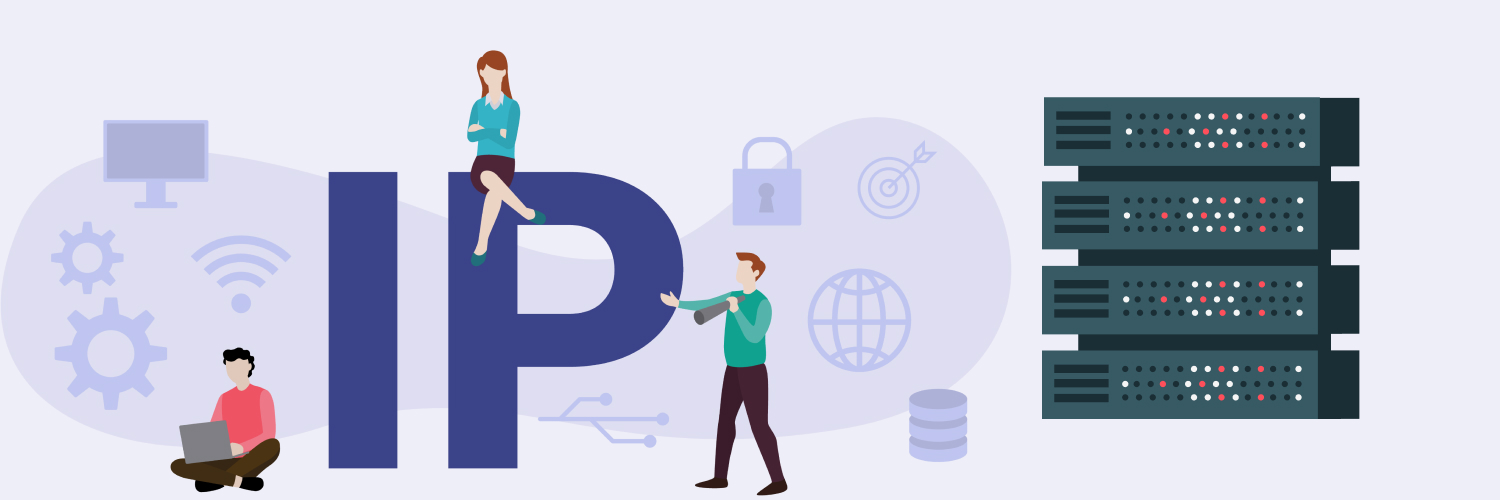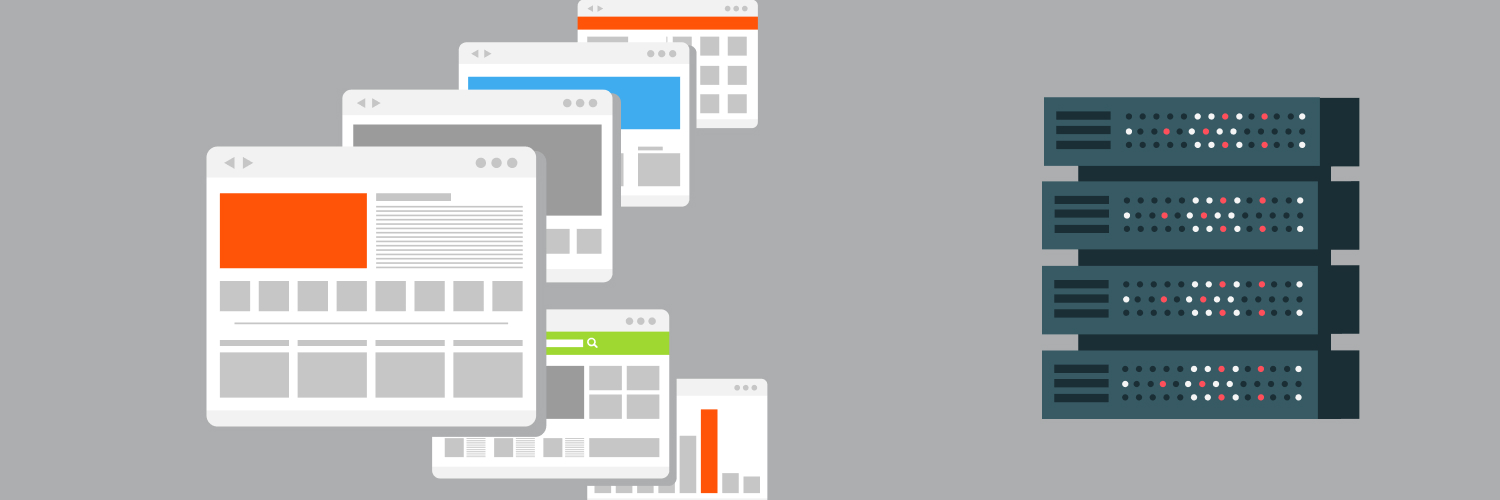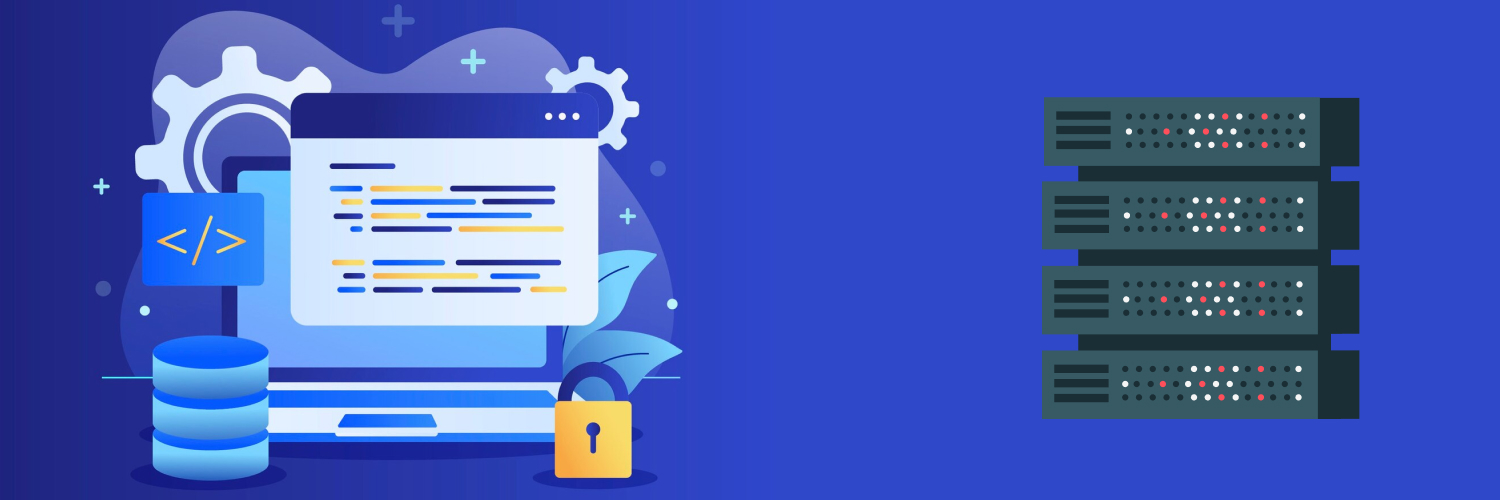Web Crawlers: What Are They? And How Do They Work?
The internet is vast: even with today’s algorithms and technology, it’s difficult to know for sure how large the web is. Given its size, one of the biggest challenges is determining web content accurately. That is to say, which website is hosting what web page.
One solution is to parse each web page individually and catalog each page according to its category and content. Then how exactly can we browse the internet efficiently, knowing what to search for and which web page is about what?
The answer, of course, is through web crawlers.
Now you might be wondering, what is web crawling? What is a web crawler, and how does it work? We’ll explain in this article and look at some of the advantages and disadvantages of web crawlers.
So keep on reading to find out everything you need to know about web crawlers, from the very basics!
What Is A Web Crawler?

Simply put, a web crawler is an internet bot that indexes web pages. Search engines commonly use web crawlers for web indexing, also known as web spidering. Web spidering is another term used to define web crawling, but the two are essentially the same.
Think of a web crawler as the machine equivalent of a person sorting through library books and cataloging them according to their content and category.
As a machine, a web crawler can perform this cataloging task much faster than humans can and is, therefore, better-suited to crawl through the vast size of the world wide web.
Web crawlers can also be used to validate hyperlinks. By validating hyperlinks, a crawler can determine which links are dead links that lead to busted web pages, sorting the broken links from valid links. In a similar vein, they can also validate HTML and sort through erroneous tags.
By accessing web pages to catalog them, web crawlers essentially make future information retrieval processes much faster. They do so through a process known as web indexing.
What Is Web Indexing?

The internet is a big place; at least 3.65 billion web pages we know of and can access. How do we know which pages to access, though?
Just think about it; the average person cannot possibly parse through the entirety of the web by themselves. Instead, they must rely on search engines to search for websites.
Search engines use web indexing, a series of methods to “index” or bookmark web pages for easier access later. This is different from how individual websites, or intranet networks, index web pages through back-of-the-book indexing.
The evolution of web indexing
In the early days, search engines relied on what was called “back of the book indexing.” This method of indexing was crude and produced unreliable results. It wasn’t until after 2000 and better search algorithms that search engines started producing more accurate results for internet searches.
Compared to search engines of the past, the newer search engines started indexing data through metadata tags. This metadata includes keywords, phrases, or short descriptions of website content. A web crawler can fetch this metadata through this list and use it to index web pages.
The metadata tags are the equivalent of a typical information retrieval process. Going back to our library analogy, just as a human would read a book’s title, summary, or synopsis and possibly skim through the text to find out what the book is about, a crawler uses metadata tags to more or less achieve the same with web pages.
Although the metadata indexing method is much faster than the past methods, the size of the web is too massive to estimate. A web crawler cannot index every webpage, and although the indexed web continues to grow in size, it does so at a fraction compared to the entire web.
Still, that’s not to say web indexing isn’t a helpful tool; far from it. As search engines continue to index more and more web pages, indexing can prove useful not only for helping users find relevant sites but also for helping site owners increase their page rank.
Types of web crawlers
By now, you should know the answer to “what is a web crawler?” The next step is to understand the different types of web crawlers and their purpose.
Just as there are different levels of the internet, namely the surface web, the deep web, and the dark web, there are also other types of web crawlers. Each type of web crawler has a similar fundamental purpose but differs from its counterparts by being optimized for a different purpose.
There are five basic types of web crawlers, each with a different use case. Let’s go over the major types and see what each one is best suited for.
1. General-Purpose web crawler
First up, we have the quintessential or “classic” web crawler, the general-purpose web crawler.
This kind of web crawler was the first web crawler type coded. The general-purpose web crawler indexes as many pages on the web as possible. By doing so, it crawls through a vast data reserve to cover as much of the internet as possible.
While general-purpose web crawlers have a broad scope of operation, running them requires intensive resources. These resources include a high-speed internet connection and ample storage space, just to name a few.
Usually, only search engines use web crawlers. That said, people or organizations web scraping massive datasets may also use them, as may internet service providers.
2. Focused web crawler
The next type of web crawler is the focused web crawler.
Unlike the general-purpose web crawler, a focused web crawler specializes only in a particular topic. As such, it may be restricted to certain meta tags. For example, think of a web crawler that only crawls through websites or blogs with food recipes and catalogs them.
Focused web crawlers are more about the depth of search rather than breadth of search, the latter being general-purpose web crawlers. The search engine or the person deploying the web crawler selects the focus topics beforehand, after which the web crawler focuses only on those topics.
Compared to focused web crawlers, general-purpose web crawlers are less resource-intensive. Even with a slower internet connection or slow internet speed, this kind of web crawler can run smoothly.
Despite this, some larger search engines like Google, Bing, and Yahoo may still use focused web crawlers along with general-purpose web crawlers.
3. Incremental web crawler
The third significant type of web crawler is the incremental web crawler.
Unlike typical types of web crawlers, incremental web crawlers primarily focus on tracking the changes across existing or already indexed web pages. They frequently visit web pages and sites and update their content to keep track of new changes on a web page.
Incremental web crawlers have three main modules. These are the ranking module, the update module, and the crawl module. Additionally, they use the priority queue data structure to implement incremental crawling functionality.
To keep things short, the priority queue stores all the URLs discovered by the crawler, and another queue stores the URLs the crawler has visited and indexed.
Each time a web page updates, its URL receives high priority from the update module, which places it near the discovery queue’s head. The crawler visits the page near the head of the discovery queue and checks for increments, then places them back in the visited queue.
Priority queues are helpful because they save a lot of computing resources. By only visiting newly updated pages, the incremental web crawler saves on memory, time, and computing costs all at once.
4. Parallel web crawler
Next up, we have the parallel web crawler.
As the name suggests, this kind of web crawler runs multiple processes in parallel instead of just one.
The goal of the parallel web crawler is to optimize the crawling process by maximizing the download rate but minimizing parallelization overhead. This ultimately helps with parsing the overall internet, which is huge.
There are also parallel crawler mechanisms in place for downloading the same web page more than once. A policy prevents the same URL from being appended to more than a single download since two parallel crawling processes can discover the same URL.
The two most common distributed crawler architectures are the distributed crawler architecture and the intra-site parallel crawler. Ultimately, the advantage of parallel crawlers is being able to crawl through more of the web in a shorter amount of time.
5. Hidden web crawler
Finally, we have the hidden web crawler, also referred to as the deep web crawler.
The internet is not a single entity; there are layers to the web. Most of the web we can usually browse and access is called the surface web. However, a bigger part of the internet is invisible to most of us, called the deep web (also called Invisible Web Pages or Hidden Web).
Traditional static web pages on the surface web can be indexed using typical search engines since the search engine can reach them using traditional hyperlinks. A hidden web crawler, however, tries to crawl the deep web.
Web pages that are part of the deep web cannot simply be accessed through static links. Instead, the search engine needs specific keywords or user registration to access parts of the deep web.
Ultimately, the hidden web crawler is the only kind of web crawler that can access the deep web and help crawl hidden web pages.
How Web Crawlers Extract Data

At the heart of the web crawler is computer code that can index web pages automatically. To understand how the crawler works, we must first understand the structure of web pages.
Web pages are basically built from HTML structures, including tags and keywords, in a simple view of things.
Crawlers will often use this tag-like structure to their advantage by specifying the content they need to crawl. Crawlers can focus on particular attributes and scan and retrieve web pages that match those attributes using a specific HTML tag.
To start off, a web crawler will use a seed to generate new URLs. This is because manually parsing through each individual URL is next to impossible given the size of the web.
Instead, the crawler will use a seed to start with: a list of pre-indexed URLs. The seeded values are then added to a queue of web pages to visit if they aren’t already present in the “visited” queue. Sometimes, a different Abstract Data Type (ADT) than a queue may be used in web crawlers.
The crawler will crawl the web pages from the list of newly found URLs and find additional hyperlinks that the seed URLs generate. The process will keep on repeating for a specified amount of time until results are achieved.
Usually, there are policies in place for selecting which web pages to crawl and in what order. This prevents the web crawler from aimlessly crawling through many web pages.
There are no hard-and-fast, universally applicable rules for each web crawler. Instead, different types of web crawlers will use different rules to ensure optimum crawling. These rules may include a page’s visitor count, the number of outbound URLs that link to the webpage, or metadata information that may indicate valuable information.
Web crawlers hope to index and extract valuable data by looking for web pages with a high visitor count. The idea is that if many people visit a single webpage, you may be able to extract useful information from it. Similarly, just as a research paper with a high impact will be cited by many other research papers, a webpage with high-quality information will have many other sites pointing to it.
Each search engine has its own separate set of policies in place to weigh these different factors. These are usually proprietary algorithms that help build each search engine’s spider bot and later determine the web crawling policies. These policies also help with web page updates or changes so that the same crawler can revisit an already indexed web page if the need arises.
No matter how a web crawler is built, the goal is always to index web pages on the internet.
What else are web crawlers used for?
Although search engines primarily deploy web crawlers to index pages, use cases go well beyond just web indexing. Here are some of the other common uses for web crawlers:
Web scraping
Often, people confuse web crawling with web scraping. Although the two have similar names, they are different processes. Web scraping is the process of extracting data from a website using a bot.
That said, web scraping is actually a traditional application of web crawling. Typically, each web scraping bot has different modules built-in or functions that execute certain features. This often includes a module for web crawling; a spider-bot first crawls through different web pages, then the scraper extracts raw data from the crawled pages.
Automatic site maintenance
Web crawlers are also commonly used to maintain websites automatically.
For instance, a web admin can configure a crawler bot to check a website periodically. The crawler can identify errors like site-blocks or navigational errors by parsing through the site’s HTML elements. Once the crawler finds an inaccessible link, it could immediately alert the webmaster of the block.
This style of site maintenance may prove helpful for businesses that depend on their website running smoothly 24/7, such as online retailers.
Freshness check
Finally, crawlers can also perform freshness checks for hosts and services provided by external applications.
You can set up a web crawler to periodically ping links to all the relevant web pages on your site. The crawler can then get the results and match them against the freshness threshold of each host or service. The results can determine which hyperlinks you need to update, remove, or promote for better search engine visibility.
Web Crawling Challenges

Not all is simple when it comes to web crawlers. Other than the massive size of the web, there are significant challenges that even the best web crawlers must face. Here are a few of them:
Content updates
Most websites frequently update their content. As such, web crawlers have to visit updated pages once again to re-index them. Re-indexing, also known as recrawling, is when web crawlers revisit sites to check for new pages or page updates.
One problem associated with re-indexing is that repeatedly visiting web pages may lead to excessive resource consumption. The intervals between the checks need to be fine-tuned; too often, the crawler will consume more resources, too far apart, and may miss out on page updates.
Non-Uniform web structures
Although HTML is the building block for web pages, the rest of the web can vary significantly between its structure and data storage formats. Due to the variations in data storage, different websites can store data in different ways.
While most sites may use the Document Object Model (DOM) method of data storage, the exact storage method may vary. A page may, for example, use WebSQL, cookies, or IndexedDB instead of HTML5 local storage. It is, therefore, a challenge for web crawlers to recognize these subtleties and account for them.
Metadata mislabeling
When it comes to indexing or data extraction, the web crawler trusts that the metadata it sees is accurate. Unfortunately, sometimes a webpage’s metadata may not be entirely accurate. Without proper metadata tags, a crawler cannot fetch accurate results, and it may end up parsing through unnecessary web pages and unable to find a relevant topic.
The workaround? The web crawler needs proper context to focus on a particular topic, without which indexing and information retrieval are difficult.
Server bandwidth limitations
A website may be large, containing hundreds or thousands of individual web pages within it. A web crawler must therefore visit each side page to index it. Unfortunately, in such cases, a web crawler can end up consuming excessive server bandwidth.
The crawler must restrict their access to only the relevant pages to work around this. Other times, crawlers may also use polling methods or run multiple crawlers in parallel, which may increase bandwidth consumption.
Anti-Scraping tools
Although web scraping is a valuable web crawling application, some web admins may not be too thrilled with them. Web scrapers can be incredibly annoying when they restrict server bandwidth, as we just mentioned.
For this reason, web admins can implement several traps for bots on their sites. These may include honeypots, CAPTCHA, or IP bans for web scrapers. Though this measure may seem excessive, some web admins have no other choice to protect their servers from unintentional DDoS through scraper and crawler bots.
Web Crawling and Proxies

After looking at some of the challenges of web scraping, especially anti-scraping measures, you might wonder: Is there a way to bypass these limitations and build a more efficient crawler?
The answer is yes: through proxies. Proxies can help protect crawlers against some common anti-scraping tools, which ultimately lead to IP blocklists and bans.
With that said, not all web proxies are created equal. Some proxy services only provide a single IP address. The problem here is that if a crawler stays on a single IP address for too long, it can still get banned or blocklisted. To work around this, you need a way to keep rotating IP addresses somehow.
Enter Rayobyte rotating residential IPs. These proxies are automatically optimized for web crawling and will help ensure your crawler does not run into any difficulties.
How so, you may ask? Simple: Rayobyte rotating residential IPs automatically swap your IP address occasionally and keep a list of IP addresses in rotation. This can beat almost any ban detection logic that web admins may deploy to detect bots.
This IP swap process is automatic with Rayobyte rotating residential IPs. Instead of waiting and switching your IP address manually, you can rest easy knowing that Rayobyte rotating residential IPs take care of the dirty work for you.
Rayobyte proxies come with an intuitive dashboard that makes managing your proxy easy and has API access for quick proxy management.
By choosing Rayobyte rotating residential IPs, you can rely on a single solution for your proxy needs rather than multiple suppliers. The end result is that it’s a lot easier to integrate your crawler with proxies.
Datacenter proxies
If you find Rayobyte rotating residential IPs useful, you’ll be even more thrilled to learn about Rayobyte datacenter proxies.
Rayobyte datacenter proxies use an autonomous number system (ASN) for maximum redundancy and greater diversity of IP addresses. Rayobyte datacenter proxies can work around bans with over 9 ASNs to work from, even if a site bans an entire ASN rather than individual IP addresses. The list of Rayobyte datacenter proxy IP addresses is also huge.
As of now, there are over 300,000 IP addresses available from over 27 Countries. These countries include the US, UK, France, South Korea, Germany, and even Singapore, to name a few.
Additionally, the service provides customers with infrastructure that can handle large amounts of data: 25 petabytes per month, to be exact. This high throughput handling is what makes Rayobyte an excellent choice for proxies.
Crawlers: A Tool for Good

One of the most common concerns that people have regarding web crawling is whether the practice is ethical.
Although some users believe that web crawlers are inherently bad, the reality isn’t so black and white. Like any other tool, web crawlers can be ethical or unethical, depending on how you use them. That said, some proxy providers such as Rayobyte Residential Proxies are committed to the highest standard of ethics for web crawling.
Here’s how Rayobyte Residential Proxies help ensure web crawling happens in the most ethical way possible:
- Strict Vetting Process: Rayobyte Residential Proxies have a rigorous vetting process for their customers. Not only is there no option to directly buy the residential proxies, but all customers must also first demo their product and go through a vetting process. These measures help ensure that no nefarious actors can access Rayobyte products for malicious purposes.
- Automated Monitoring: A common complaint webmasters have against web crawlers is that they can heavily consume server bandwidth, leading to DDoS attacks. Although Rayobyte Proxies ensures customer privacy, we also screen risky user behavior, such as excessive server requests. If there is a hint of any unethical behavior on the client’s part, we immediately detect it and shut down their access.
- Manual Spot Checks: We have a dedicated technical team that works 24/7 to ensure clients use our proxies safely. If a client uses our products inconsistently with the Rayobyte core values, we immediately take appropriate action.
- Preventative Measures: Finally, Rayobyte takes appropriate preventive measures to help ensure ethical usage of its products. For instance, we lock a customer’s account to only the domain names they’ll use on our system. We prevent the risk of customers using our systems on other sites for unethical purposes by doing so.
Rest assured, even though we take these measures to prevent unethical web crawling and web scraping, we fully value our customer’s privacy. As such, we collect absolutely no personal information from our customers; the only thing we collect is their IP address.
All Rayobyte products fully comply with data privacy and protection laws, such as the GDPR and the 2018 California Consumer Privacy Act. By doing so, we help ensure that not only are our products completely ethical, but they also help provide our customers with a secure, private proxy experience.
The Best Web Scraping Bot: Our Recommendation

There are plenty of web scraping bots available on the internet today, both from big industry names and smaller providers.
Given how widespread web scraping is nowadays, why not go for an existing solution rather than code one on your own from scratch?
The Rayobyte Rayobyte’s Web Scraping API is ready to use for scraping applications right out of the box. The bot uses a state-of-the-art scraping API and is customizable, providing scraping solutions to users regardless of budget or enterprise size.
All Rayobyte’s Web Scraping API output is in the form of a structured JSON output from a website’s parsed metadata. Scraping Modules keeps updating itself and frequently adds new modules that make scraping even easier.
The best part? Rayobyte’s Web Scraping API has a simple pricing scheme with no hidden fees or recurring costs.
Final Thoughts

Web crawling may seem complicated at first, but it doesn’t have to be. At the end of the day, it’s all about parsing different web pages and using their metadata to index new and updated web pages.
There are different types of web crawlers available for specific purposes. Web crawling also has particular challenges associated with it, most of which proxies can solve.
For the best web crawling experience, we recommend Rayobyte rotating residential IPs and datacenter IPs. When combined with the Scraping bot, both of these solutions will make for an optimized web crawling and scraping experience!
The information contained within this article, including information posted by official staff, guest-submitted material, message board postings, or other third-party material is presented solely for the purposes of education and furtherance of the knowledge of the reader. All trademarks used in this publication are hereby acknowledged as the property of their respective owners.





